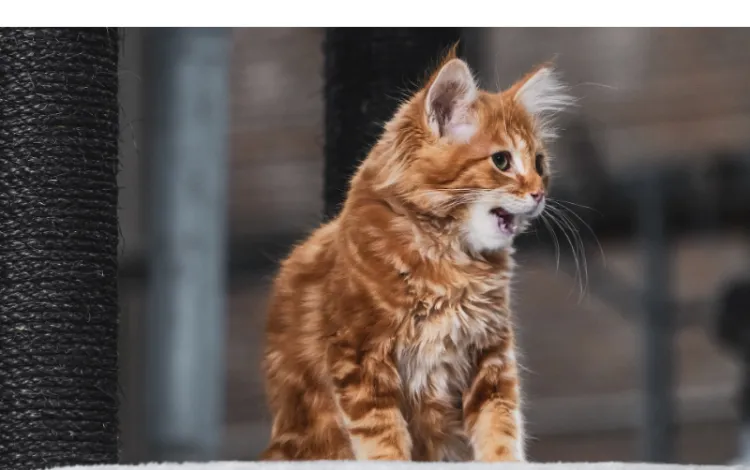Welcome to the world of Ragdoll kittens! These adorable, fluffy companions are known for their gentle nature, striking blue eyes, and affectionate personalities.
In this blog post, we’ll discuss how to take care of a ragdoll kitten and provide you with everything you need to know to give your new fur baby the best possible start in life.
Ragdoll cats are a popular breed and for good reason. They’re not only gorgeous, but they’re also known for their laid-back attitude and strong bond with their human families.
As a pet and animal expert, I’m excited to share my knowledge on raising a happy and healthy Ragdoll kitten.
Fun Fact #1: Did you know that Ragdoll cats are sometimes called "puppy cats" because of their tendency to follow their owners around like a puppy? They're also known to be more willing to play fetch than most other cat breeds!
Preparing Your Home for Your Ragdoll Kitten
Before your new fur baby arrives, making your home a safe and welcoming environment is essential. Let’s explore how you can set up the perfect space for your Ragdoll kitten to grow and thrive.
Setting up a cozy kitten corner
Designate a cozy and quiet corner of your home as your kitten’s safe haven. This area should include:
- A comfy bed or blanket for napping
- Food and water dishes
- Toys for entertainment
- A scratching post or pad to discourage unwanted scratching behavior (read more about Ragdoll cats and scratching furniture)
Having a designated space will help your kitten feel secure and comfortable in their new home.
Creating a safe environment
To ensure your Ragdoll kitten’s safety, take the time to kitten-proof your home:
- Remove or secure any dangling cords, strings, or blind pulls to prevent choking hazards
- Keep small objects that could be swallowed out of reach
- Store cleaning supplies and medications in secure cabinets
- Close off any small spaces where your kitten could become trapped
Fun Fact #2: Ragdoll cats are known for their limited jumping abilities compared to other cat breeds. Check out these articles to learn more: Can Ragdoll Cats Jump Fences? and How High Can Ragdoll Cats Jump?
Feeding Your Ragdoll Kitten
Proper nutrition is crucial for your kitten’s growth and overall health. Let’s discuss choosing the right food and establish a feeding schedule that works for you and your Ragdoll kitten.
Choosing the right kitten food
Opt for a high-quality kitten food that meets the nutritional needs of a growing Ragdoll kitten. Look for a formula with:
- High protein content from animal sources (such as chicken, turkey, or fish)
- Essential vitamins and minerals to support healthy growth and development
- Balanced omega-3 and omega-6 fatty acids for a shiny coat and healthy skin
You can choose between wet and dry food or offer a combination of both. Wet food provides additional hydration and can be more palatable, while dry food can help maintain dental hygiene.
Feeding schedule and portion sizes
During the first six months, feeding your Ragdoll kitten three to four small meals a day is best. You can gradually reduce the frequency to two meals a day as they grow.
Be sure to follow the feeding guidelines on the kitten food package, as each brand may have different recommendations for portion sizes.
Remember always to provide fresh water for your kitten, and keep an eye on their weight and growth to ensure they’re getting the right amount of food.
Grooming Your Ragdoll Kitten
Ragdoll cats have a beautiful, semi-long coat that requires regular grooming to keep them soft, tangle-free, and healthy. Here are some tips to help you establish a grooming routine for your Ragdoll kitten.
Brushing and combing
Start by brushing your kitten’s coat at least two to three times a week, using a slicker brush or a long-toothed comb. This will help remove any loose hair, prevent mats, and reduce the risk of hairballs.
Be gentle while brushing, especially around sensitive areas like the belly and underarms.
Nail trimming
Regular nail trims are essential to maintain your kitten’s nail health and prevent any accidental scratches. Use a pair of cat nail clippers to trim the tips of their nails every two to three weeks.
Be cautious not to cut the quick, the pink part inside the nail, which can cause pain and bleeding.
Bathing
Ragdoll cats are generally clean animals but may need an occasional bath if they get dirty or oily. Some Ragdolls even enjoy the water!
To learn more, check out these articles: Do Ragdoll Cats Like Water? and Do Ragdoll Cats Like Taking Baths?
Use a gentle cat shampoo and warm water, and be sure to thoroughly rinse the soap from their coat. Always towel dry your kitten after a bath and keep them warm until they’re completely dry.
Socialization and Playtime
Socializing your Ragdoll kitten and providing plenty of playtimes are crucial for their mental and emotional well-being. Let’s explore how you can make the most of these essential aspects of kitten care.
Interactive play sessions
Engage your kitten in daily play sessions to stimulate their natural instincts, keep them active, and strengthen your bond. Use toys that encourage hunting and pouncing, like wand toys or small softballs.
Remember to switch up the toys regularly to keep your kitten interested and challenged.
Socializing with other pets
Introducing your Ragdoll kitten to other pets in your home should be done gradually and with care. Start by allowing them to sniff each other through a closed door, then gradually increase their interactions under supervision.
Be patient, as it may take time for your pets to feel comfortable with each other.
Socializing with other animals is essential for your kitten’s emotional development and can help prevent behavioral issues in the future.
You might find this article helpful for more information on Ragdoll cats and their interactions with other pets: When Do Ragdoll Cats Go Into Heat?
Healthcare for Your Ragdoll Kitten
Taking care of your Ragdoll kitten’s health is vital to ensure a long, happy life. You need to know here about vaccinations, vet visits, and detecting potential health issues.
Vaccinations and vet visits
Schedule an initial vet visit for your kitten as soon as possible after bringing them home. Your vet will perform a thorough health check and administer any necessary vaccinations.
Typical kitten vaccinations include:
- Feline panleukopenia (Feline distemper)
- Feline calicivirus
- Feline herpesvirus (Rhinotracheitis)
- Feline leukemia virus (FeLV)
Following your vet’s recommendations for booster shots and regular check-ups is essential to keep your Ragdoll kitten healthy.
Preventing and detecting health issues
Ragdoll cats are generally healthy, but like all breeds, they can be prone to specific health issues. Regular vet visits, a balanced diet, and proper grooming can help prevent many health problems.
Keep an eye out for any changes in your kitten’s behavior, appetite, or appearance, as these could be signs of an underlying issue.
If you notice anything unusual, contact your vet for advice. Early detection and treatment can significantly impact your kitten’s health and well-being.
Litter Box Training
Teaching your Ragdoll kitten to use the litter box is critical in raising a happy and well-adjusted cat. Fortunately, most kittens learn quickly, and with a little guidance, your kitten will be on the right track in no time.
- Choose the right litter box and litter: Opt for a litter box with low sides that’s easy for your kitten to access. As for the litter, choose a clumping, unscented variety that’s safe for kittens.
- Location, location, location: Place the litter box in a quiet, low-traffic area of your home where your kitten will feel comfortable and secure. Make sure it’s easily accessible and away from their food and water dishes.
- Introduce your kitten to the litter box: As soon as your kitten arrives home, show them the litter box and gently place them inside. This will help them become familiar with the box and its location.
- Establish a routine: Encourage good litter box habits by placing your kitten in the box after meals, naps, and play sessions. Praise them when they use the litter box correctly to reinforce positive behavior.
- Keep it clean: Regularly scoop and clean the litter box to maintain a sanitary environment and encourage consistent use. A clean litter box is more appealing to your kitten and reduces the risk of accidents outside the box.
Conclusion: The Joy of Raising a Ragdoll Kitten
Congratulations on embarking on this rewarding journey of raising a Ragdoll kitten!
By following the guidelines we’ve covered in this comprehensive guide, you’ll be well-prepared to give your new furry friend the best possible start in life.
Remember to focus on these key aspects of kitten care:
- Preparing your home
- Providing a nutritious diet
- Grooming and hygiene
- Socialization and playtime
- Healthcare and vaccinations
- Litter box training
By dedicating time, love, and attention to your Ragdoll kitten, you’ll be rewarded with a strong bond and a lifetime of affection from your new best friend.
Enjoy the joys and adventures of sharing your life with a Ragdoll kitten!









![why-maine-coon-follow-me-everywhere]](https://www.howtoanimal.com/wp-content/uploads/2023/04/Featured_Image_why-maine-coon-follow-me-everywhere.webp)
